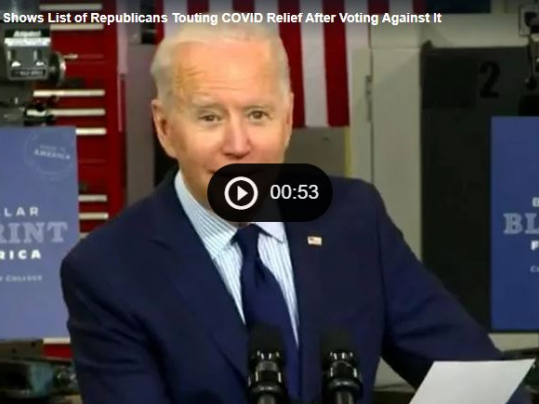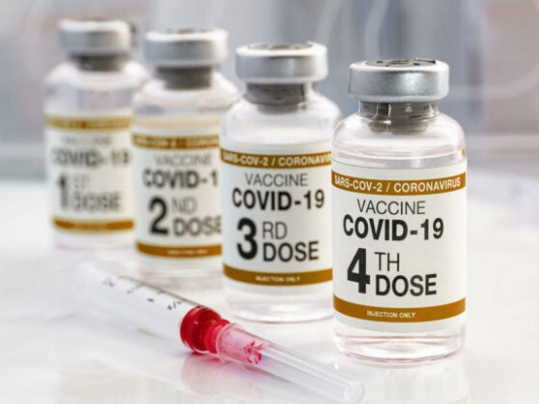The FDA Announces A New Definition Of What’s ‘Healthy’

The FDA have announced a new definition of what they consider healthy. Recent dietary recommendations emphasize a plant-based diet rich in vegetables, fruits, whole grains, legumes, nuts, and seeds.
New guidelines for nutrition labels that can be placed on the front of food containers to suggest that they are “healthy” were released by the Food and Drug Administration on Wednesday.
Manufacturers can brand their products as “healthy” if they contain a significant amount of food from at least one of the food groups or subgroups (such as fruit, vegetables, or dairy) suggested by dietary guidelines. They must also conform to particular dietary restrictions for saturated fat, sodium, and added sugars. For example, for a cereal to be labeled “healthy,” it must include three-quarters of an ounce of whole grains and no more than 1 gram of saturated fat, 230 milligrams of sodium, and 2.5 grams of added sugars per serving.
The labels are intended to make it simpler for consumers to understand nutrition labels and make wiser decisions at the grocery store. According to the FDA, the proposed regulation (read below) would bring current nutritional knowledge, the updated Nutrition Facts label, and the current Dietary Guidelines for Americans into alignment with how “healthy” claims should be defined.
Additionally, the FDA is creating a symbol that businesses can voluntarily use to label food items that adhere to federal definitions of the term “healthy.”
The statement was made in advance of the White House Conference on Hunger, Nutrition, and Health on Wednesday. The conference was the first such event since 1969, when a summit organized by President Richard M. Nixon’s administration resulted in significant expansions of food stamps, school lunches, and other initiatives that have been attributed with lowering national hunger and serving as a vital safety net during the pandemic.
The White House stated in a statement this week that the FDA’s new system, once it is implemented, will “quickly and easily communicate nutrition information” via tools like “star ratings or traffic light schemes to promote equitable access to nutrition information and healthier choices.” By including more veggies or whole grains or by creating new items that adhere to the modified criteria, the system “can also prompt industry to reformulate their products to be healthier,” it claimed.
The stakes are really high.
According to the Centers for Disease Control and Prevention, six out of ten American people have chronic lifestyle-related diseases, which are frequently caused by obesity and poor diet. According to the CDC, these diseases are the primary cause of death and disability, as well as a major contributor to the nation’s $4.1 trillion in yearly health-care spending.
Furthermore, the obesity problem is not improving: Obesity, particularly among children, increased dramatically throughout the pandemic, with the greatest shift occurring among children aged 5 to 11, who gained an average of more than five pounds. Prior to the pandemic, approximately 36% of 5- to 11-year-olds were classified overweight or obese; this climbed to 45.7 percent during the pandemic.
In an effort to combat the obesity epidemic that has engulfed the United States, governments in various Latin American nations have enacted stricter food labeling rules, fighting back against sugary beverages and ultra-processed meals. For instance, items in Chile must have a black stop sign on the front of their containers if they contain excessive amounts of added sugar, saturated fats, calories, and sodium. Nothing with a black stop sign may be offered for sale, advertised in a public place, or included in a broadcast ad aimed at children.
Organizations like the Center for Science in the Public Interest have long urged the FDA to establish front-of-package labeling that is compulsory, consistent, and supported by research. They assert that front-of-package nutrition labeling will reach more consumers than “Nutrition Facts” on the backs of packages, enabling them to rapidly select healthier foods and encouraging businesses to rethink their product formulations. Nutritionists believe that Americans typically consume too much sodium, added sugar, and saturated fat from packaged meals, therefore being able to rapidly determine which goods are high or low in those nutrients would be very beneficial for everyone’s health.
The Biden administration has backed the FDA’s efforts to limit sodium intake, reinforcing the agency’s declaration last year that it would require food firms and restaurants to reduce sodium in their products by nearly 12% over the next 2½ years. In a related attempt, the government proposes that the FDA lower Americans’ sugar consumption by “including potential voluntary targets” for sugar content in food producers.
New labeling language is bound to spark debate among food makers looking to profit on Americans’ desire for healthier foods.
“The FDA’s ‘healthy’ definition can succeed only if it is clear and consistent for manufacturers and understood by consumers,” said Roberta Wagner, a spokesperson for the industry group Consumer Brands Association, on Tuesday.
However, nutritionists disagree on what constitutes “healthy” food. Foods high in what many nutritionists refer to as “good fats,” such as almonds or avocados, would be regarded “unhealthy,” whereas artificially sweetened fruit snacks or reduced-fat sugary yogurts may be considered “healthy”?
The proposal is far from final and is sure to face opposition from food manufacturers, who have pushed to profit on customers’ growing desire to eat healthier in recent years.
“In reality, FDA’s proposed rule will need to undergo significant review and revision to ensure it does not place the politics of food above science and fact,” said Sean McBride, founder of DSM Strategic Communications and former executive at the Grocery Manufacturers Association. “The details are critical because the final rule goes well beyond a simple definition by creating a de facto nutrition profile regulatory scheme that will dictate how food can be made for decades to come.”
Front-of-package labeling has genuine potential, according to Peter Lurie, executive director of the Center for Science in the Public Interest, but it must be compulsory, straightforward, nutrient-specific, and contain calories. According to him, such labeling changes customer purchasing habits and drives corporations to reformulate their products in order to achieve higher ratings. According to him, unless a healthy definition and label are very explicit, some corporations would try to cheat the system by “health-washing” their less nutritious products to make them appear healthy.
In 2016, the FDA launched a public process to update the “healthy” nutritional content claim for food labeling. However, critics claim that the dietary rules frequently fail to focus on the proper things. During the Trump administration, for example, the 2020 dietary standards committee was prohibited from considering the health implications of red meat, ultra-processed foods, and sodium consumption.
There have been some big pendulum swings in federal nutrition guidelines. For many years, advice was based on intuitive, but wrong, reasoning: eating fat makes us fat. High cholesterol is caused by consuming a lot of cholesterol.
The FDA first defined “healthy” in 1994, with an emphasis on fat content. In 2015, the FDA issued a warning letter to snack bar manufacturer Kind for the company’s “healthy” claim. What is the issue? The bars, which were largely nuts, were heavy in saturated fat. To reflect current science, nutrition experts and Kind petitioned the FDA to “update its regulations around the term healthy when used as a nutrient content claim in food labeling.”
The FDA overturned its decision in 2016, allowing Kind to use the phrase “healthy” and stated that the agency will reassess the term’s definition.
The new FDA guidance, issued this week, would automatically allow whole fruits and vegetables to bear the “healthy” label, but prepared food products would have to exceed nutrient requirements as well as percentage restrictions for added sugars, sodium, and saturated fats.
“Seven years after filing our Citizen Petition, Kind is celebrating that the FDA has proposed an updated regulatory definition of ‘healthy,’ ” Kind chief executive Russell Stokes said Wednesday. “A rule that reflects current nutrition science and Dietary Guidelines for Americans is a win for public health — and that’s a win for all of us.”
Recent dietary recommendations emphasize a plant-based diet rich in vegetables, fruits, whole grains, legumes, nuts, and seeds. They maintain a strict stance on restricting salt and saturated fat intake, but they merely remark that cholesterol is “not a nutrient of concern,” eliminating the long-standing 300-milligram-per-day limit.
- Source : GreatGameIndia


















